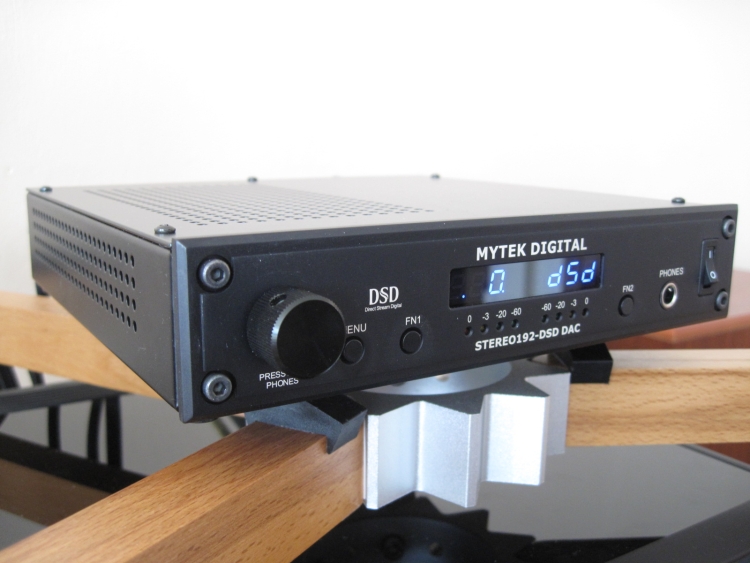
Pro-audio mastering unit put to the audiophile test
A sound engineer colleague at my workplace proposed I take a close listen to his newly acquired mastering DAC. How could I resist? The cherry on top was that it natively supports DSD.
Retail price around 1499 euro
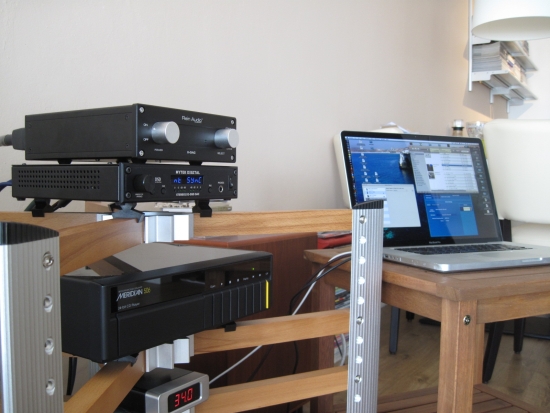
Concept
This is a highly versatile DAC intended for mastering engineers involved in downloadable DSD and SACD mastering/remastering. With it being a professional unit, it offers various inputs: USB 1,1, 2.0, Firewire, coax and optical sp/dif, Wordclock, AES/EBU and serial DSD. It also offers both single ended and balanced outputs. 192khz and DSD is supported via both USB and Firewire, both for Mac and PC. Its functionality doesn’t stop there, it also offers analog or digital volume control, as well as bypassing these circuits altogether and there are two filter settings for PCM as well as low pass filters for DSD. Finally it also features switchable upsampling.
Setup
I used both USB 2.0 and Firewire inputs and for the output I used both the balanced and single ended outputs. I won’t go into audioble differences between these outputs too deeply, but I had a feeling that the balanced outputs sounded more powerful and offered a wider soundstage, but this could also be due to interaction with the transformer-balanced inputs on my preamp. Rest assured: in essence either output is just fine. I made sure that the phase was correct (switchable in the menu) and experimented with the filter settings and upsampling. For filtering you can choose between sharp and soft and indeed that’s how the audible effect is perceived, but the effect in this case isn’t very large, certainly less audible than the filter settings on the dCS Delius. I left it on sharp for the remainder of the listening. Upsampling works well: it instills more calmness and more fluidity in the treble while maintaining overall speed. It does take away some dynamic attack and drive in the bass so which is best will depend on your taste and setup. I left upsampling off because that made for the best bass. The bass incidentally is really excellent. Regular readers know that I like good bass and that I’m always talking about how good the Wadia 861 and Levinson 390S are with bass. Well, the little Mytek really is comparable in that department! Finally there’s the volume control. It can be switched between digital and analog, as well as switched out of the path entirely. The latter allows for the purest sound with tight, strong bass, clean mids and accurate highs. Switching analog volume control into the signal path but keeping at zero attenuation makes for a more filtered, smoother sound with subjectively less grain. This setting can be nice with less than perfectly mastered recordings.
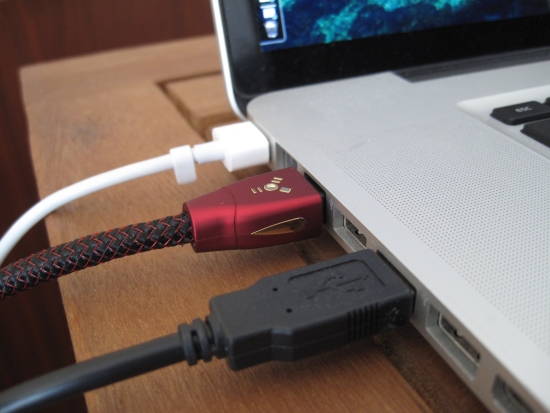
Above: The Mytek supports both USB and Firewire and believe it or not: they do sound different!
Cable matters
Again here’s something some readers will probably frown upon… I know it can’t be, it shouldn’t be and there’s no reason why it should be so but believe it or not, I’ve had several occasions where I noticed that different USB cables can sound different. This was also true in the case of the Mytek. I first compared USB to Firewire and noticed a difference so large that I think it would be audible on most systems. At least, it was on my Magnepan MG3.6R Magnetostatics with their pure ribbon tweeter, but I doubt that you would not hear it on Genelecs. Anyway, the difference isn’t in the detail department, it’s more of an emotional response. While Firewire sounded more precise and articulate, USB (2.0) sounded more fluid and polished. I found Firewire to sound a little dry compared to USB but you could also say that USB is less accurate. A matter of taste methinks. That is, if you even believe this. If you don’t, don’t worry about it: both interfaces work reliably and excellently. Unless, that is, if you want to use DSD. In that case Firewire is obligatory because even though the manual states that USB 2.0 is DSD compatible, I couldn’t get it to work. All I got was static.
On to power cables then. The first cable I tried, a Furutech Alpha 3 with IeGO 24k Gold connectors already made for a splendid sound. Because it matched so well at first instance, I didn’t bother trying other cables for a big part of the listening sessions. However, at some point I couldn’t resist and connected a Lapp cable instead of the Furutech. Sure enough: there was smoother treble and a more relaxed sound. But it subjectively also took away some resolution and articulation in the lower registers. Even though I love smooth treble, this cable was doing more damage than good. Back to the Furutech then. This is a neutral, detailed sounding cable that is nevertheless comparatively very refined and free from grain. Seeing as it matches so well, I am even more convinced of the Mytek’s neutrality and I think it will work well in many setups and with a wide range of cables.
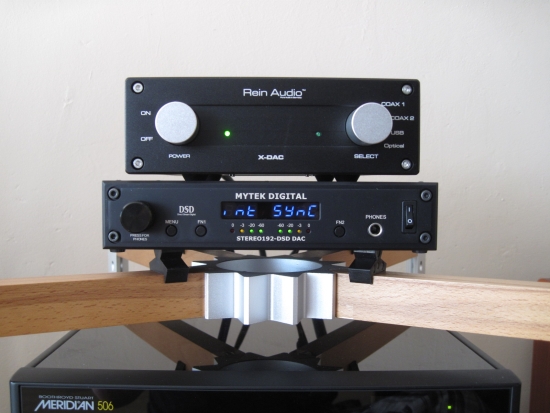
Above: The Mytek was compared directly to the Rein Audio X-DAC, a simpler 580 euro USB DAC, aimed at the audiophile.
44.1k Playback
I played various 44.1k files through the Mytek, in mp3, WAV and AIFF formats. Independent of the source file, the Mytek’s sound is big and powerful, with deep, solid bass and a lively character. Its midrange is uncolored, in fact the entire audioband is extremely neutral and natural, definitely not artificial/synthetic. Despite its highly neutral character, the Mytek always sounds believable, and although it is detailed enough to be called analytical, it never crosses over to the clinical. While it offers good detailing allround, I’ve heard better low-level resolution and better lack of grain, especially in the treble. This area is arguably its weakest spot in that while treble is accurate and quite open, it does lack some air and can be a tiny bit brittle compared to my other components. That includes the Levinson 390s, Levinson 360S, Linn Klimax DS, as well as some classic Marantz CD players that I keep around. Compared to the PS Audio PWD however, the Mytek strikes a very good figure, sounding much alike, only nodding to the PWD in terms of 3D soundstaging and focus. With mastering devices one shouldn’t speak of things such as romantics, smoothness or luxuriousness but I just can’t help myself. The Mytek doesn’t do smoothing, it doesn’t sound luxurious. And it shouldn’t. But as mentioned, it also doesn’t sound strident. I guess if anything, it is musical.
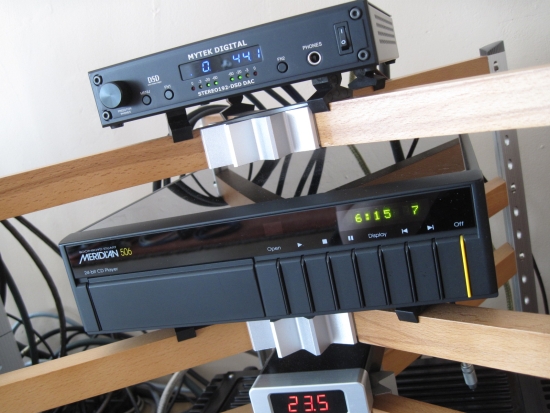
KingRex UD384 USB/SPDIF interface
Taking the Macbook’s USB output into the KingRex UD384 and coaxially in spdif form from there into the Mark Levinson 360S dac made for a very different delivery. While the UD384 had sounded very open and very clean compared to the Rein Audio X-DAC, compared to the Mytek it wasn’t that much more open. The combo did make for better air, more fluid treble and better low level detailing, but the Mytek wasn’t blown away. Not at all, it was just a different delivery, more ethereal, where the Mytek was more earthy, more grounded. There is definitely something to the Mytek’s powerful delivery that is just very entertaining.
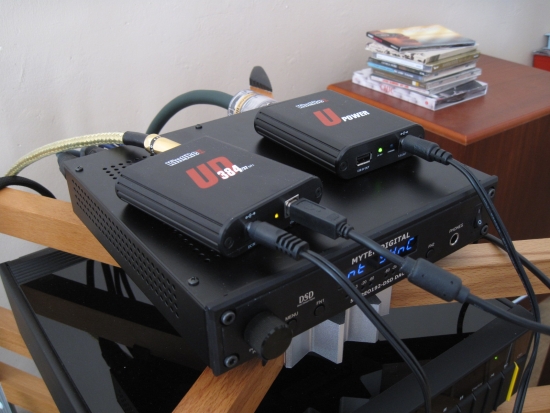
Further comparisons
For me, the Ayre QB-9 USB DAC is still the benchmark for its superb combination of low level detail and refinement, finesse, fluidity and treble air while avoiding clinicality but the Ayre lacks bass power and it doesn’t have the Mytek’s solidity and dynamic presentation by far. The dCS Delius/Purcell combo had all of Ayre’s subtle detailing and almost all of its airiness but it didn’t sound as believable, as organic and while the dCSes never sounded artificial, nevertheless, they could never quite convince me. That’s why they were replaced by the current Levinson DAC. Inbetween I also had a Weiss DAC2 on visit. Compared to the dCS combo and the Audiomeca Enkianthus I had back then, the Weiss was a lot tighter and more focused. You could be lured into thinking that it was more detailed even than the dCS combo, but that would be to miss the point. I feel that it was just a little too prominent, too controlled, too dry. The Mytek 192DSD reminds me of the Weiss for its powerful and confident delivery if not its refinement but thankfully it has none of its clinical character.
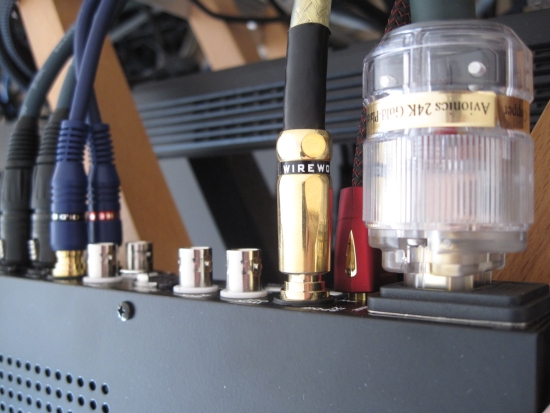
SP/DIF coaxial Playback
Just to see how well the Mytek would be as a traditional DAC, I took my favorite digital cable, the Wireworld Gold Starlight III+ and connected the coaxial digital output of the Meridian 506.24 CD player to the Mytek’s coaxial digital input. Now, I like this player for its super-smooth presentation and its forgiving nature to bad recordings, but this was a major upgrade for the Meridian. All aspects were better: bigger, deeper, more powerful and more articulate bass, a livelier midrange with more presence as well as better focus and treble… well, it wasn’t better but different, more pronounced and a little drier. I preferred the Meridian’s treble, but the Mytek was probably more accurate.
96k Playback
I have large archives of 24/96 LP recordings that I made at friends’ places. For this I use an Apogee Duet combined with a Jeff Rowland Cadence MC phono stage. For some reason these recordings thus far sound best via Winamp 5 (not even bit-accurate) on the PC, using an M2Tech HiFace Evo USB/spdif interface that runs via ST glass to a Levinson 360S DAC. Accessing the files via UPnP with the Linn Klimax DS allows for more naturalness, better low level resolution and some other audiophile traits but playing back the files on the PC allows for the most emotional delivery. Well, that’s entirely personal of course. Sometimes I think that I like to have a little coloration here and there, a little thickening of bass, a little exaggeration in soundstage width and decay times. Call me a heretic. Playing these files on the Mytek makes for a different delivery. Now I have bass power that I didn’t hear when I recorded the LP’s at my friend’s place and this makes the music more exciting, especially with old pop and disco. But the Mytek also lays bare that my friend’s Thorens turntable probably isn’t the best turntable ever. It’s just that I never have that feeling when playing back the files on the PC. The recordings sound more forgiving that way. But I get it: once more I stray from the path that the recording engineer walks, the path that is pure, neutral, unaltered sound. Well then I guess that I can only praise the Mytek. But if I leave its character or lack thereof aside, if I’m allowed to make one comment on its sound quality, it is that its treble is a little rough, even with these 96k LP recordings. These same recordings did sound quite a bit higher res, and lots more fluid on the dCS Delius/Purcell combo I had some time ago.
High sample rate WAV/FLAC/DSD Playback
I had quite a big collection of high sample rate WAV’s and FLAC’s, as well as native DSD files to play with and spent two evenings doing so. Rather quickly I established a preference for one of the formats and no, it isn’t DSD. Quite consistently, I heard the same good things and bad things with the DSD files: smooth, extended, finely detailed treble, a free-flowing midrange and a complete lack of digitalness as good points. While resolution also improved a notch, it wasn’t that much better. I’ve heard better resolution with the Linn Klimax DS and the dCS Delius/Purcell. It seems that the Mytek just inherently has limited resolution because I experienced the same when playing my 24/96 LP recordings. Going back to DSD, what also struck me in a negative manner was the bass. It was a bit soft and wooly and had less dynamic impact than with any of the other formats. It was this last aspect that annoyed me most, especially since I knew that the Mytek was capable of splendid bass. Well, not so much with DSD. There was less power, less articulation and less fullness. Also, transients seemed more rounded and small dynamic changes less obvious. 96kHz FLAC sounded as good as I have heard it, which is almost as good as WAV, but not quite. There a subtle rounding on the transients and less obvious dynamic attack. 192kHz FLAC had the same sound signature, but had a bigger, wider soundstage portrayal, smoother, more fluid treble but also less focused center phantom imaging. The same differences applied to WAV. Where 96kHz was an obvious improvement over 44.1kHz in all areas, 192kHz again seemed like one step too with the bass and lower midrange becoming a little wooly, just like with FLAC. The more files I played, the more obvious became my preference for 24/96 WAV. It pushed all the right buttons: powerful, deep, articulate bass, a lively and live-sounding midrange and smooth, open, extended treble. Still, there is something very magical about DSD in that it doesn’t sound like PCM anymore. No matter how high the samplerate, PCM will always sound as such. DSD is different in that there’s no perceived square-ness. It’s like looking at an Apple iPhone with Retina display, ie the pixels are so small that you can’t see them anymore. I still have hope for the format, but would probably need a better DAC to bring out the most of it.
Conclusion
The Mytek 192-DSD is a high-quality DAC that works as well in the domestic home as in the professional environment. For once, a pro DAC sounds detailed and highly neutral without sounding clinical. It offers superb functionality and sounds excellent with all inputs and all formats. Its best areas arguably are its bass and midrange which both are very powerful, dynamic and articulate. Its only flaws are a slightly coarse treble at all sample rates and an apparent lack of resolution at extreme high sample rates. Still, if you want this much functionality (DSD support included) for only 1500 euro the Mytek might well be the best currently available.

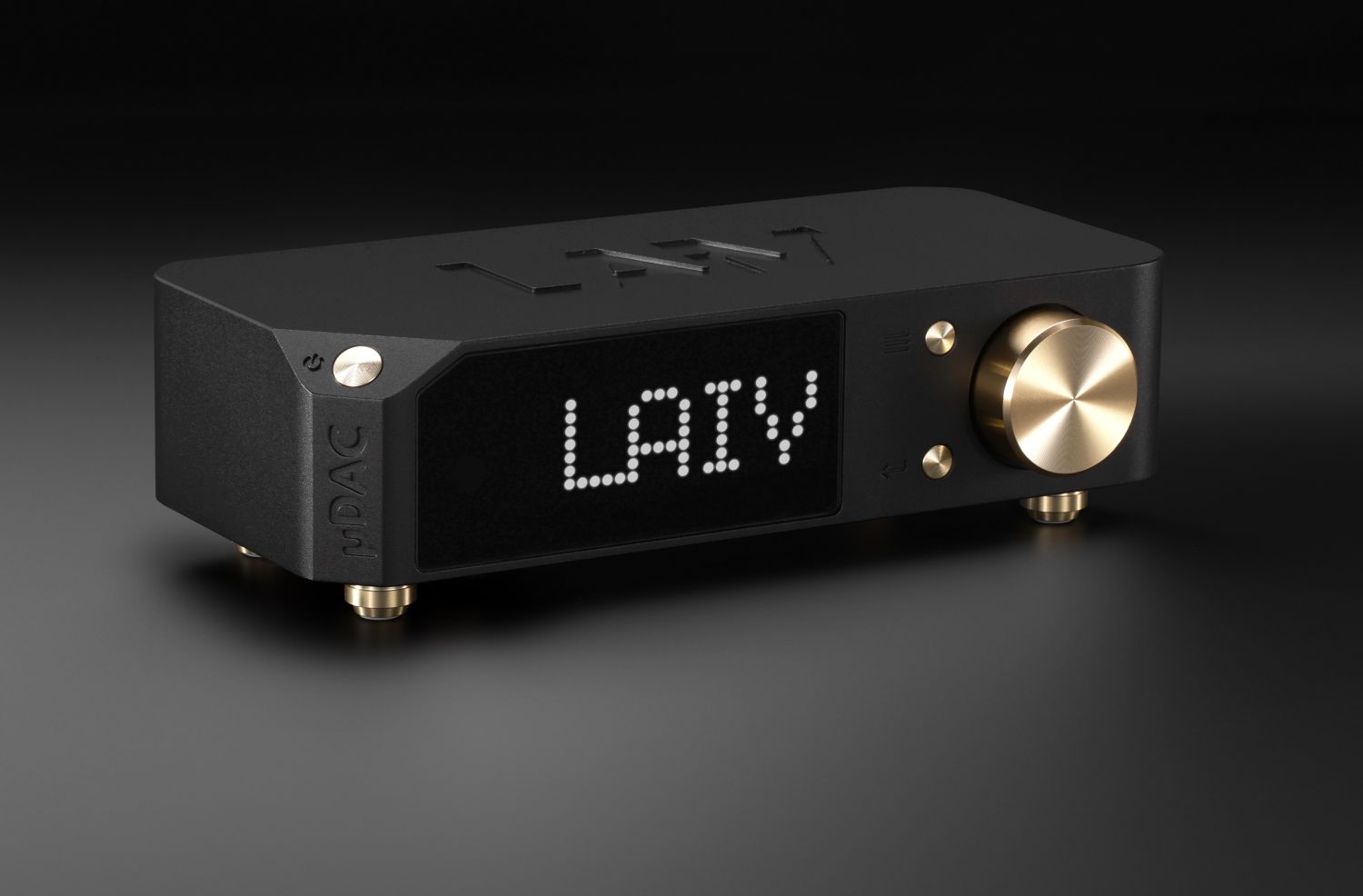






Response to feedback received via mail:
When I’m going on about the Mytek’s treble and slight lack of resolution at higher sample rates, then this is in comparison to the best I have heard. That means compared to the Linn Klimax DS or the Levinson 360S DAC, playing 24/96 WAV or FLAC or the dCS Delius/Purcell stack that I used some years ago. The dCSses had remarkable resolution and finely detailed, airy treble, even when playing 44.1 WAV, upsampled to 176 by the Purcell. (192 was a bit too rounded off I found).
At 44khz the Mytek sounds excellent across the board albeit ever so slightly coarse in the treble. Resolution for all intents and purposes, is fine. Going to 96khz, the Mytek sounds even better, but I don’t hear the same increase in treble refinement and nuance like I do with ultra highend dacs. Going to 192khz, there’s the expected boost in soundstage width as well as a more gentle, slightly less WAV-like character, but again I don’t hear that much of an increase in resolution, but I do feel that the Mytek loses some points on its strong sides at this high sample rate. Going to DSD does make for an entirely non-digital sound, like DSD should do. There’s nothing that shouts “I’m a digital component” anymore. But at the same time I feel the Mytek loses points again in the bass, even more so than with 192khz WAV.
The DSD64 files I used were mainly extracts from ISO rips, only two tracks were 2L sourced. While I don’t know the exact source of the DSD files, I still feel that my conclusions are valid, even if some of the DSD files were in fact converted from PCM source. Afther all, the results were completely consistent through each of the 10 albums I played. Even so, I admit to having relatively low experience with DSD. However, to put things into perspective, I have had a few SACD players and experienced the same lack of bass power with them, but less so with the Audio Aero Prestige of which I suspect that it decodes DSD to PCM prior to conversion. If I have new experiences that would in retrospect change my preliminary opinion about the Mytek, I’ll update the review. Also, if the unit turns out to become better with longer burn in, I’ll also make note of this.
The Mytek has been in use for a couple of months and its owner has it switched on at all times. During the course of this review (2 weeks) the unit was powered on throughout. I don’t think that further running is needed.
Incidentally, the Ayre QB9 is my reference for treble air and fluidity but its biggest drawback is lean bass that lacks power and drive.
In conclusion I would say that this is actually a very nice converter. It just doesn’t do everything to the same high standard, nor could it at its price point. I have heard cheaper converters with smoother, more refined treble, but none of them had the bass power and dynamics of the Mytek.
This is a great review, but I wonder how much the Mytek DACs have come on over the years, particularly something like the Brooklyn Bridge might be interesting for a review?